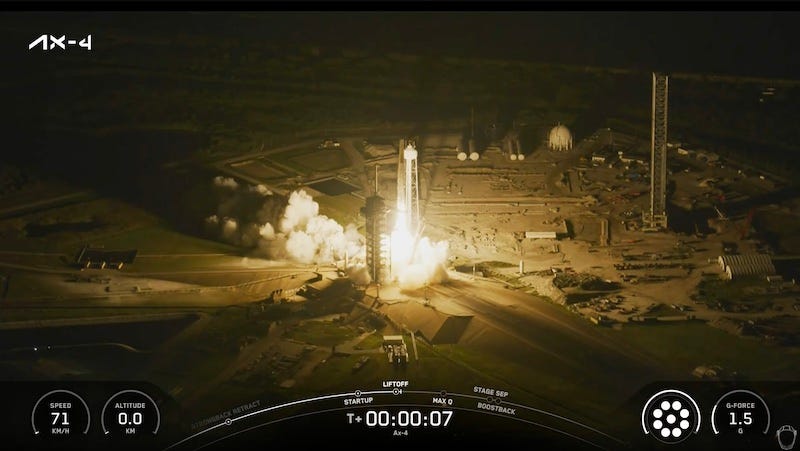The Axiom-4 (Ax-4) mission has finally launched to the International Space Station. The launch was conducted early this morning from Launch Complex 39A (LC-39A) at NASA’s Kennedy Space Center in Florida by SpaceX. Following stage separation, Falcon 9’s first stage landed on Landing Zone 1 (LZ-1) at Cape Canaveral Space Force Station in Florida.
The launch had been delayed multiple times due to technical issues with the Falcon 9 booster, and then a pressure leak in a Russian module connected to the ISS.
Dragon is scheduled to autonomously dock with the space station on Thursday, June 26 at approximately 7:00 a.m. ET. The crew will spend as many as 14 days aboard the station.
During their time on the orbiting laboratory, the crew will conduct more than 60 scientific experiments and demonstrations focused on human research, Earth observation, and life, biological, and material sciences. The company says this will be the most research and science-related activities conducted on an Axiom Space mission aboard the International Space Station to date, underscoring the mission's global significance and collaborative nature to advance microgravity research in low-Earth orbit (LEO). The mission emphasizes scientific portfolios led by the U.S., India, Poland (in partnership with ESA), and Hungary. It aims to boost participation in these countries by involving diverse stakeholders, showcasing the value of microgravity research, and fostering international collaboration. The studies will enhance global knowledge in human research, Earth observation, and life, biological, and material sciences, demonstrating the space research capabilities of the crew's home nations.
The Ax-4 crew includes members from India, Poland, and Hungary, marking each nation’s first mission to the space station in history and second government-sponsored human spaceflight mission in over 40 years.
Shubhanshu Shukla will be India’s second national astronaut to go to space since 1984.
Sławosz Uznański, European Space Agency (ESA) project astronaut, will be the second Polish astronaut since 1978.
Tibor Kapu will be the second national Hungarian astronaut since 1980.
Peggy Whitson will command her second commercial human spaceflight mission, adding to her standing record for the longest cumulative time in space by an American astronaut.
Ax-4 will be the second commercial spaceflight mission made up of government and ESA-sponsored national astronauts.
The Ax-4 mission stands as a beacon of opportunity for India, Poland, and Hungary, each poised to leverage this mission to advance their national space programs.





